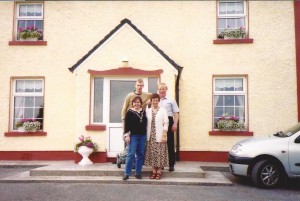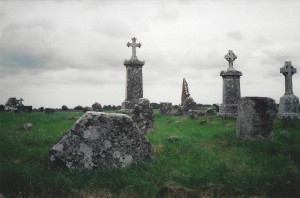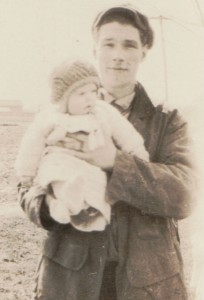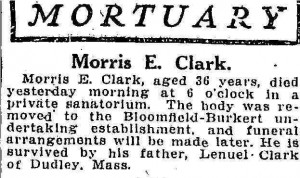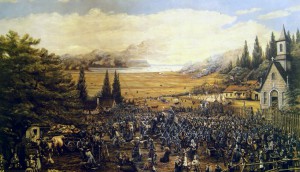Vita Brevis recently marked a milestone, with the publication of its five-hundredth blog post. Early in January 2016, the blog will celebrate its second birthday, and, in a tradition started last year, today and tomorrow I will write about twelve representative posts published in the blog in 2015. With about 250 posts in both 2014 and 2015, Vita Brevis holds a lot of material for readers to sample, and I urge the curious to wend their way through the blog using authors, categories, or tags to navigate.
On 23 January, Eileen Pironti wrote about finding some of her Irish cousins in County Roscommon:
Over the course of my research, I discovered that several of Margaret (Glennon) Curley’s siblings also immigrated to the United States and settled in Roxbury, Massachusetts. I looked for records pertaining to these family members and located her brother Timothy Glennon’s naturalization record, which listed his place of birth as County Roscommon in Ireland. I was thrilled to finally have a lead regarding my great-grandmother’s birthplace. I searched various County Roscommon church and civil records and was able to determine that Margaret (Glennon) Curley was born in Onagh, Taughmaconnell Parish. I posted an inquiry at the Glennon Family Genealogy Forum, thinking that I might be able to connect with a descendant of one of Margaret (Glennon) Curley’s siblings who had immigrated to the United States. However, I was surprised to receive an email from an individual named Vincent Glennon from Taughmaconnell Parish who saw my post.
He informed me that he was the great-grandson of one of Margaret (Glennon) Curley’s siblings who had remained in Ireland. Luckily, I was about to go on a trip to Ireland with a friend, so we made plans to meet during my vacation. During my trip I spent a day in Taughmaconnell Parish with my newfound Glennon cousins. They showed me the property where Margaret (Glennon) Curley and her siblings grew up, as well as the childhood home of her mother, Anne (Galvin) Glennon…
Penny Stratton wrote about her “dad file” – her notes on conversations with her late father, George Rohrbach – on 26 February:
Among some definite keepers – a rare photo of Dad at 18; his death certificate; clippings of his obituaries – I found some papers and clippings related to his late-in-life college graduation. Dad had quit high school to help support his family. When he was almost 60, he took the GED. He attended Baldwin-Wallace College part time and received a B.S. in geology in 1983, at age 74.
Mom had saved all the clippings of the newspaper articles written about Dad – multiple copies, of course. I was tempted to toss them after reading them; after all, I was there and I remember it all well. But then I remembered that I have children. They weren’t born until after Dad graduated, and although they know he went to college as an older adult, they haven’t read of their grandpa saying, “Going to B-W made me feel like I was young again.” They will want to see all these papers some day, and so will Dad’s other descendants…
On 18 March, Jean Powers wrote of the way her daughter’s questions about their ancestry led her to begin some long-planned genealogical research:
At dinner last month, she began asking about our family. “Where were your parents from? What about their parents?”
I answered as best I could, distracted by my two-year-old, who likes to surprise us with flying food when we least expect it.
“My parents were both from Massachusetts. My father’s parents are also from Massachusetts, and my mother’s parents are from Prince Edward Island.”
“But what about their parents? Where are they from? Are we Irish? What am I?”
I noticed her voice rising and saw she was genuinely upset not to know the answers. And suddenly I remembered that feeling, when I was her age, of yearning to be part of something bigger than myself, of anchoring myself in a network of ancestors, of ethnic tradition and identity.
To a little kid, knowing family history makes the incomprehensible weight and complexity of the past seem manageable – this is my family, which stretches back through time, and I’m part of a long line of people like me. And looking at her sweet, eager face I realized I wanted that too – I yearned for that connection with my ancestors, all the people who struggled and rejoiced and married and died to create me and my beloved little ones. So I promised my daughter then and there that I’d find out about our family, and I’d tell her all about it…
Chris Child described the complex process of “Finding Uncle Morris” (who had selectively adopted an alias) on 14 April:
One story often repeated in my family concerned the mystery of my grandfather’s uncle, Morris Larned Healy, who reportedly had died of “lead poisoning” at a bordello in New Orleans ... or Atlanta. My grandfather, who told the story, was known for his vivid imagination, so I decided to see if the story had any validity…
Healy History Revised had claimed [Morris] died 28 September 1909, but his tombstone in Dudley shows he died in 1911. Perhaps the genealogy got the year wrong, and he died 28 September 1911. I checked the Webster Times, the newspaper of Dudley’s neighboring town, for funeral announcements in the fall of 1911. There I found a notice for funeral services for Morris Healy at his parents’ house October 5, which mentioned that he died September 24. I then checked the Atlanta Constitution for fall 1911, and on September 26, I found the mortuary notice for Morris E. Clark, aged 36, who died the previous day at a private sanatorium, survived by his father Lenuel Clark of Dudley, Mass. This is partly why Morris has been so hard to find: he was using an alias. Perhaps he used the surname Clark as this was the last name of his wife when he married. His death certificate from Fulton County, Georgia, listed him as Morris E. Clark, with his correct date and place of birth, and as the son of Lemuel and Elizabeth Clark. His cause of death was acute nephritis that lasted two weeks…
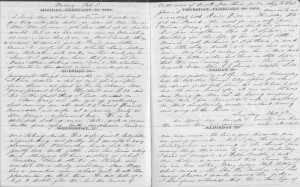 Hedwiga Regina Shober Gray diary, entries for 5-7 February 1864. R. Stanton Avery Special Collections
Hedwiga Regina Shober Gray diary, entries for 5-7 February 1864. R. Stanton Avery Special Collections
On my return from a sabbatical during the winter of 2015, I wrote about my leave project, a review of the diary of Hedwiga Regina (Shober) Gray (1818–1885), including the diarist as genealogist (on 26 May):
Wednesday, 3 November 1880: Last week, Miss Noble Jones of Florida called to see us; and in order to verify some statement made to her I took out, the next day, and looked over all my genealogical notes, still unarranged – they had been put away years ago, with the expectation of prompt attention – but my precious husband’s[1] long illness and all the sad changes, sorrow, and “retrieveless loss” that followed, have prevented my ever returning to the task. Now I have done it. It seemed folly to put them back in their unordered condition – there were items, dates, facts, I wanted to secure in my “Record of the Clay–Savage connexions,”[2] [and] no one else would ever take the pains to sort and arrange them. [They] were in parts of letters, and on loose scraps of paper &c. &c.
Instead of being a two day job as I thought, it has occupied 10 days! but I am very glad it is done. Now, unless Aunt Eliza [Clay],[3] when she comes on this winter, has new matter for my Records, all is done that I can do; and enough to give my children a general idea at least of the directions in wh[ich] they claim kinship – enough to shew them that an honorable ancestry preceded them in all the branches of their kindred blood – enough to remind them that “Noblesse Oblige” and they must do no discredit to the upright, worthy, honorable men and women whose blood meets in their veins. Thank God that I have no reason to fear for any of them! I can go no further, either on their father’s side or my own, without great expense & trouble, which I am not able to meet, in searching Records & Registers, and corresponding with numberless far away cousins &c…
And on 16 June, Zachary Garceau wrote of Canada’s “Great Expulsion” during the second half of the eighteenth century:
After a great deal of research, I determined that my first ancestor to immigrate to Canada was a man named Jean Garceau, a French soldier who arrived at Port Royal, Annapolis County, Nova Scotia in the late seventeenth century. I found that I was a descendant of his son, Daniel, born at Port Royal in 1707. My research took an unexpected turn, however, when I found that many sources placed Daniel in Connecticut and then New York in the 1750s. Why was Daniel in America?
It was then that I learned of an event known as “The Great Expulsion,” which was the forced removal of 11,500 French settlers, known as Acadians. The term Acadian arose because the lands of present-day Nova Scotia, New Brunswick, Prince Edward Island, and parts of Quebec were known as Acadie. Daniel, his wife, and his eight children were expelled on the ship Experiment and were left in Connecticut before making their way to New York…
Concluded here.
Notes
[1] Dr. Francis Henry Gray (1813–1880).
[2] The family of Mrs. Gray’s mother-in-law, Mary (Clay) Gray (1790–1867).
[3] Dr. Gray’s aunt Eliza Caroline Clay (1809–1895).
Share this:
About Scott C. Steward
Scott C. Steward has been NEHGS’ Editor-in-Chief since 2013. He is the author, co-author, or editor of genealogies of the Ayer, Le Roy, Lowell, Saltonstall, Thorndike, and Winthrop families. His articles have appeared in The New England Historical and Genealogical Register, NEXUS, New England Ancestors, American Ancestors, and The Pennsylvania Genealogical Magazine, and he has written book reviews for the Register, The New York Genealogical and Biographical Record, and the National Genealogical Society Quarterly.View all posts by Scott C. Steward →
